
Estimated reading time: 12 minutes
When I was a kid the neighbors had a dog named Fatso. Fatso was an ugly obese mongrel of a thing. He more waddled than walked. I didn’t care much for Fatso, and Fatso held little affection for me.

One fine afternoon I had been wandering about the neighborhood shooting stuff with a water gun as boys are wont to do. Fatso, for his part, was curled up in the neighbor’s flower bed minding his own business. As I walked past our eyes met, and I squirted him with my water pistol.
For a fat dog, Fatso was deceptively fast. He fired out of the flower bed and clamped onto my lower leg, doing a splendid job reorganizing my soft 7-year-old pink flesh. I shrieked like a little girl and beat a hasty retreat, fully intending on ratting out Fatso to my mom.

Mom dressed my wounds and offered a sympathetic ear. She asked what happened, and I sheepishly admitted to having shot Fatso with my water gun. Her response was, extensively paraphrased, “Maybe next time you won’t shoot the dog with a water gun, genius.” I learned a valuable lesson, and Fatso wasn’t euthanized.
The Psychology of What Is to Come
There is just something primal about the prospect of being eaten by an animal. Everybody dies. That’s obviously a given. Most of us just don’t think much about that. I have attended octogenarians who were perishing of natural causes and were genuinely surprised that their time had come. I only halfway jokingly say I want to go in my late eighties at the bottom of a smoking hole with the tail of an airplane between my shoulder blades. That would look pretty cool on a tombstone. Being torn asunder by ravenous wolves, by contrast, not so much.
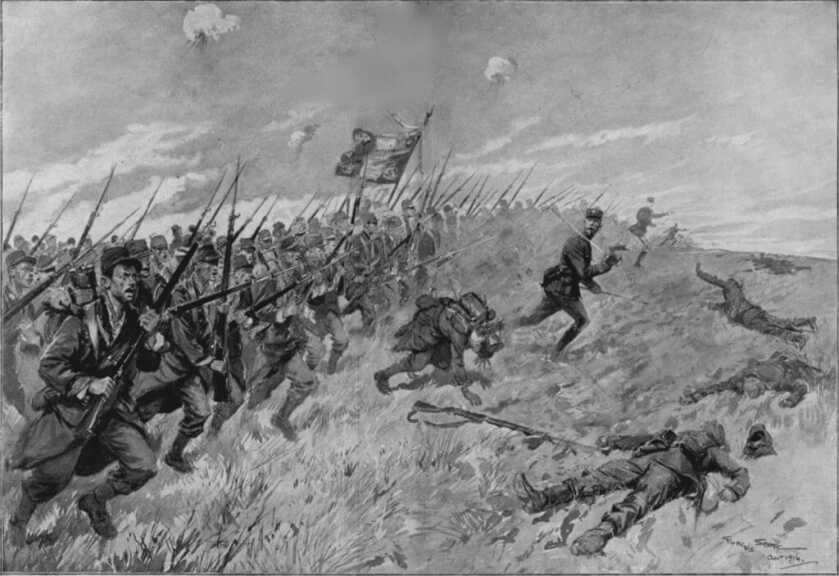
In 1917 the First “War to End All Wars” had been raging for three long bloody years. Millions had died. Once pristine European landscapes were transformed into gore-soaked hellholes. The same martial convulsions that threatened to tear human society apart also took a toll on other created things.
READ MORE: Dr Dabbs – The Winchester Lever-Action Anti-Aircraft Gun
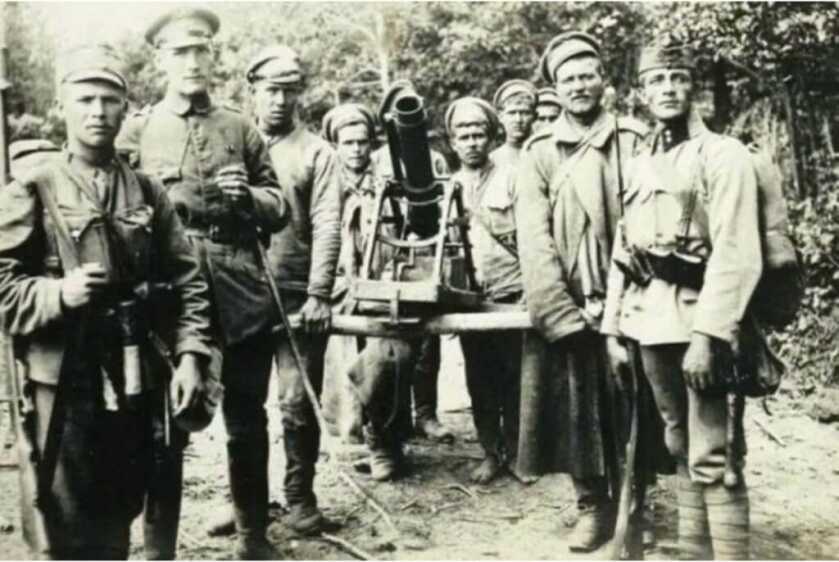
We tend to fixate on the Western Front of both World Wars. After all, that’s where our forebears fought. However, the Eastern Front represented a most gratuitous slaughter during both iterations. In 1917 the Germans and the Russians were killing each other in great big bleeding batches.
The exigencies of total war meant that many flocks of farm animals were sacrificed to support the troops. Those that remained lacked the shepherds to guard them. This made the predators both desperate and bold.
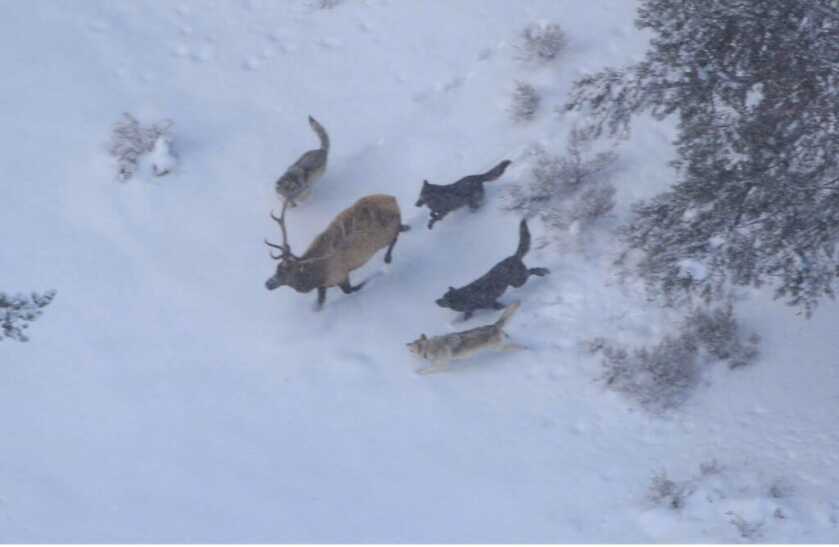
How The Wolf Attacks Started
According to a report from Berlin, large packs of wolves had departed the forests of Lithuania and Volhynia in search of food. A dispatch in the El Paso Herald claimed that wolves killed goats, sheep, and small cows in and around rural villages as they moved into Germany. In two cases they took unattended children. Then they found the battlefields.
One might think that heavily-armed soldiers would be immune to animal predation. However, nothing distracts a man like artillery and the prospect of being ripped to pieces by hot sleeting steel. In a space liberally populated by both helpless wounded and the occasional distracted straggler, these wandering opportunistic wolf packs found the protein they craved.

The tale goes that the wolves first attacked mid-skirmish while both sides were lost in the moment. Both Russians and Germans purportedly turned their weapons on the attacking canines, killing some fifty of them. However, these creatures had tasted human blood. They returned night after night in search of an easy meal.
Being blown to pieces is horrible, but being ripped asunder by wild beasts and subsequently eaten was even worse. Supposedly the respective commanders met under a white flag of truce and agreed to halt the hostilities long enough to address the common threat.
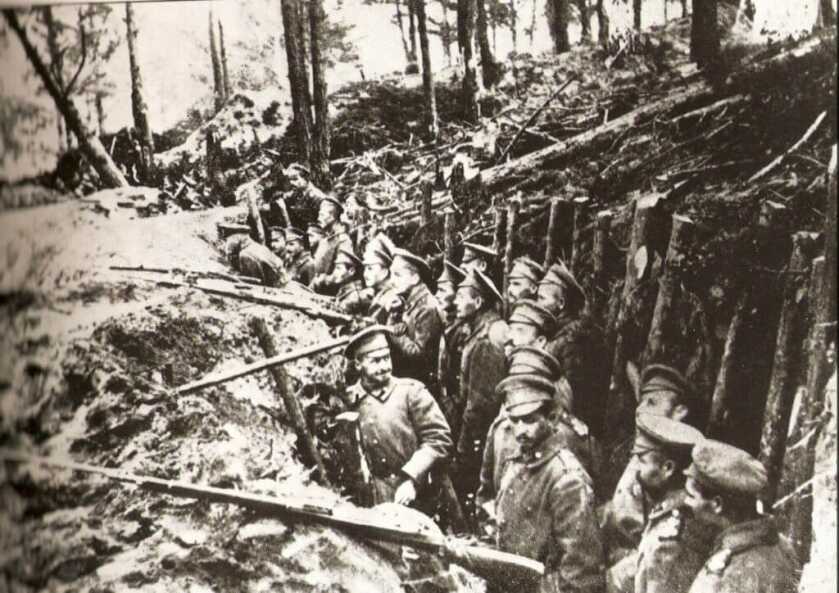
A Controversial Story
There is admittedly controversy surrounding this story. It appeared in numerous newspapers of the day, including several across the United States. The tale of desperate soldiers turning their weapons upon packs of snarling beasts captured the imagination then just as it did for me when I tripped over the details recently. Some historians feel that the narrative might have been embellished over time. However, most agree that the story likely germinated from a kernel of truth.
Formal reports of the episode are admittedly scant but consider the times. Both sides were a bit preoccupied with not dying. This was an unprecedented existential fight for survival. Exhaustively documenting an obscure animal menace likely did not percolate up on the High Command’s priority list.
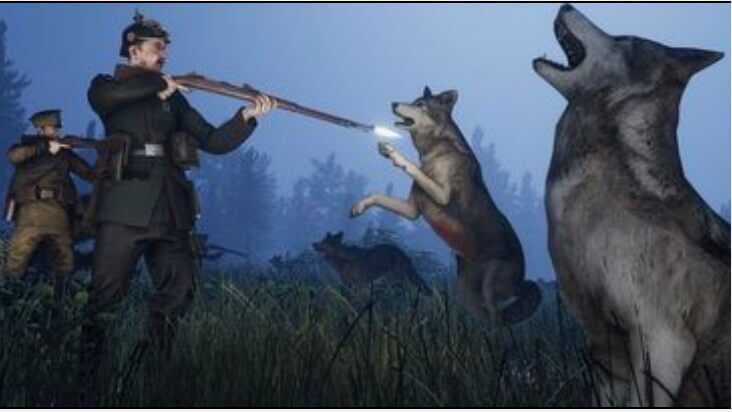
A prominent article in the Oklahoma City Times reported, “Parties of Russian and German scouts met recently and were hotly engaged in a skirmish when a large pack of wolves dashed on the scene and attacked the wounded. Hostilities were at once suspended and Germans and Russians instinctively attacked the pack, killing about 50 wolves.”
The New York Times went further, “In the course of last Winter’s campaign the wolves of the Polish and Baltic Russian stretches had amassed to such numbers in the Kovno-Minsk District as to become a veritable plague to both Russian and German fighting forces. So persistent were the half-starved beasts in their attacks on small groups of soldiers that they became a serious menace even to fighting men in the trenches.
“Poison, rifle fire, hand grenades, and even machine guns were successively tried in attempts to eradicate the nuisance, but all to no avail. The wolves—nowhere to be found quite so large and powerful as in Russia—were desperate in their hunger and regardless of danger…As a last resort, the two adversaries, with the consent of their commanders, entered into negotiations for an armistice and joined forces to overcome the wolf plague.”
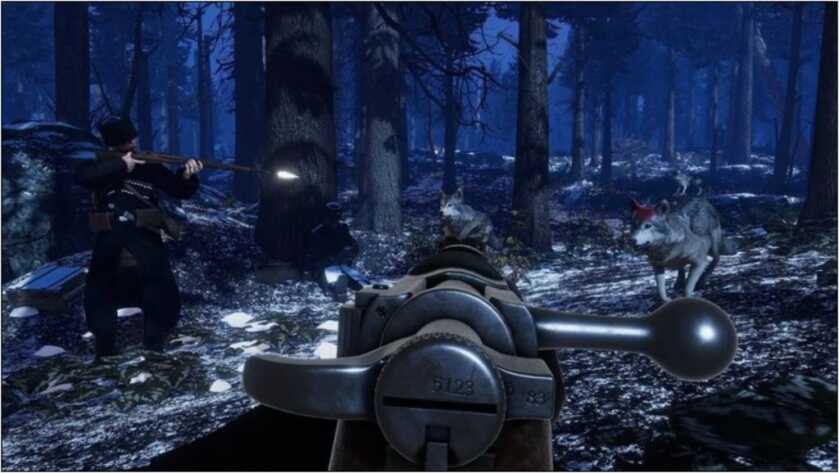
News reports of the day claimed that both Germans and Russians indeed turned their weapons on the marauding creatures, ultimately killing several hundred. The survivors fled again back to the forests. While isolated encounters with wolves were not terribly uncommon in certain areas during the war, there were no other reported large-scale attacks.
The Guns
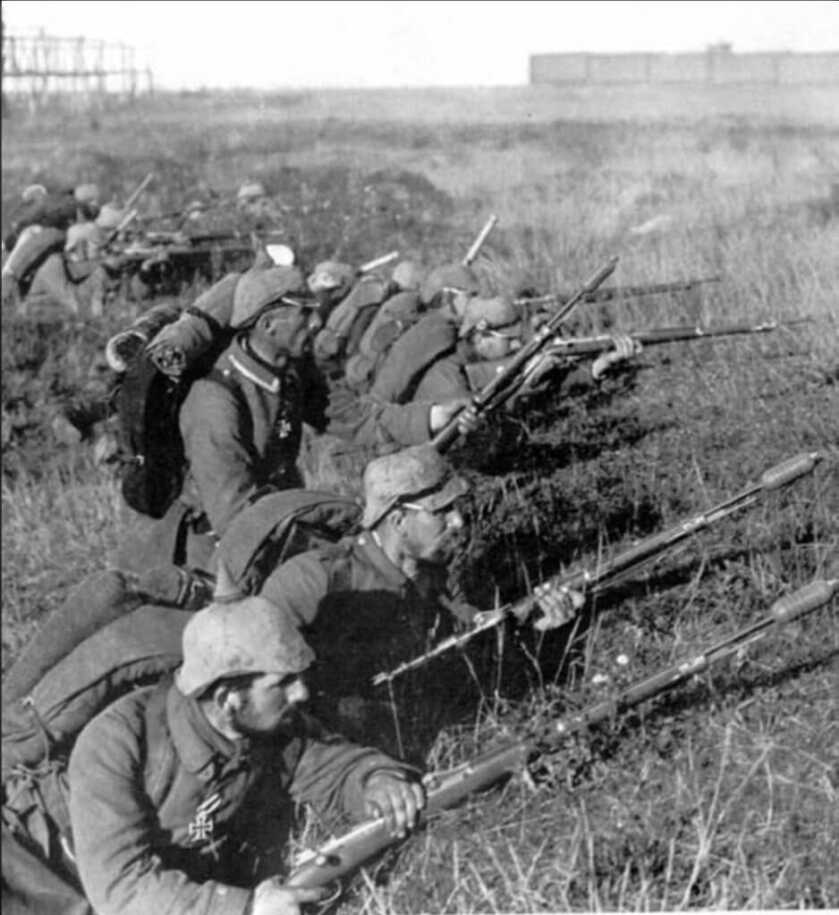
The Russians at this time wielded the same Mosin-Nagant M1891 bolt-action rifles their sons would use 23 years later in the Second World War. These rifles fed 7.62x54mm rimmed ammunition from an integral five-round magazine stocked from the top via stripper clips. For the most part, their German counterparts packed Gewehr 98 bolt-action repeaters. While the purists will certainly venomously object to my lazy categorization, both weapons ran about the same.
The really curious bit about World War 1 was that the British, Germans, and Russians all used essentially the same machine gun, itself made by an American. Hiram Maxim’s eponymous meat grinder went by the inventor’s name in German and Russian service. The British version was the Vickers, but it was still basically the same weapon.
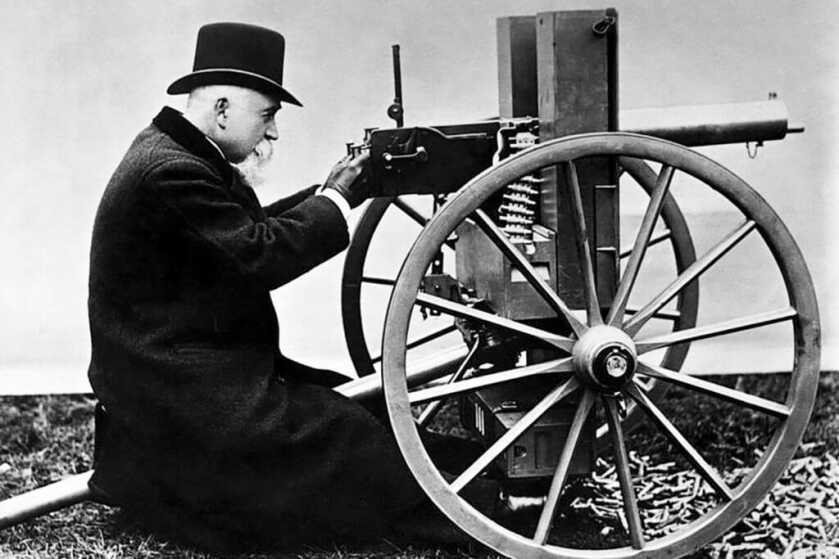
Hiram Stevens Maxim designed his recoil-operated machine gun in 1884. He birthed the Maxim Gun Company with financial support from an Englishman named Albert Vickers, the son of steel magnate Edward Vickers. They later merged with the Swedish Nordenfelt Company to leverage production capacity. The British first used the weapon in combat in Africa in 1887.

During World War 1, the Russian PM M1910 Maxim was water-cooled and fitted to a wheeled mount equipped with a modest splinter shield. The British Vickers gun was employed in a water-cooled configuration off of a tripod and with a ventilated barrel jacket as an air-cooled aircraft weapon. The German Maxim was likewise similarly employed in both air and ground roles. In addition to the heavy MG08 Maxim gun fired from a bulky 152-pound sled mount, the trimmed-down MG08/15 represented an effort to make the gun more portable for use in a mobile assault. This beast still weighed 40 pounds, however.
Ruminations
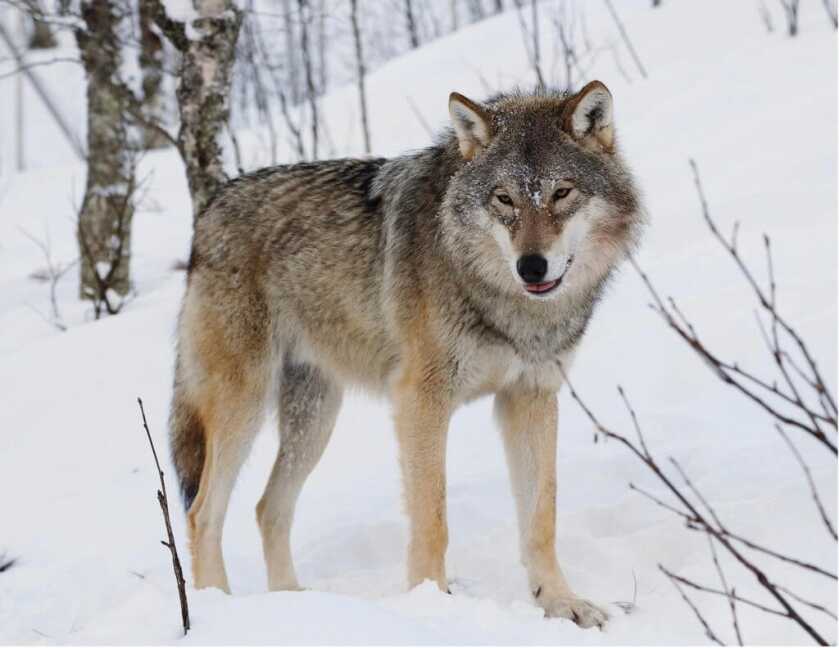
Wolves are majestic creatures up close. When I was stationed in Alaska and flying night vision goggles I would often spot packs of wolves running single file across the muskeg. I recall they seemed to have a singular purpose, all following an obvious leader. They traveled at a dead run and covered huge distances.
Wolves are wary creatures that typically avoid human contact. Google claims that between 2001 and 2020 there were 489 attacks on humans by wolves around the world, 26 of which were fatal. Of those 26, 14 of the culprit animals were later found to be rabid. By way of comparison, in 2022 alone there were 57 confirmed shark attacks on humans with 9 fatalities. In that same year around 2,000 people were killed by lightning and around 63,000 perished due to snakebite. One report I found said that the risk of a human being attacked by a wolf is above zero, but far too low to calculate. Wolves today are not a problem. However, the world was a very different place in 1917.
Nowadays there are an estimated 60,000 wolves in North America and another 15,000 still in Europe. All of the natural world has been compressed a bit by human encroachment in the past hundred years or so. Back then planet Earth was a markedly wilder place.
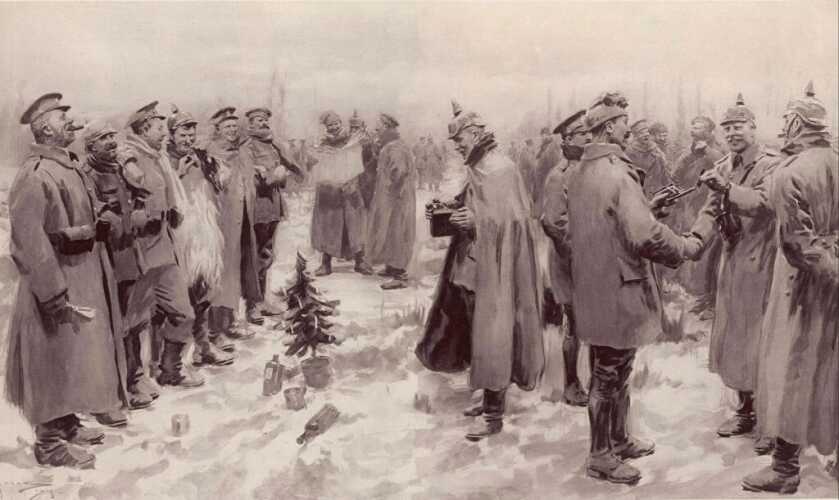
Conclusion
The Christmas Truce of 1914 was well documented. Small pockets of French, German, Belgian, and British troops began by singing Christmas carols across no-man’s land. Eventually, this led to cordial meetings in the killing zone replete with friendly soccer games and the exchange of wine, cigarettes, and sundry gifts. Only the insistence of military commanders bent upon resuming the war put a stop to the fraternization. The Wolf Truce of 1917 was a much more pragmatic affair.
War is a horrible thing, arguably the most horrible of all human follies. However, in the face of a common enemy previously committed foes joined forces for mutual survival. Perhaps what the human race really needs is indeed a proper alien invasion.
*** Buy and Sell on GunsAmerica! ***


Interesting story. I have often reflected upon WWI and the Christmas truce. I can’t imagine a more inconceivably stupid war fought for a futile purpose: various peasants killing one another at industrial scale to preserve their various monarchies.
I have always considered the execution of the Romanovs to be the only good thing that the Bolsheviks did.
My great grandfather deserted from the Austrian-Hungarian army in the middle of the war, making his way to the USA as a stowaway on a ship. That’s why I’m here.
Great tale, Will! It does seem a shame that we humans can’t unite against a common foe. Then again, if you look at the jackass representatives at the U.N… you’d think we would have much more conflict.
Apparently there is/ are something much worse than wolves. My, buddy a fellow retired driver living here in N.C. whose family goes way back. Way before the War of Northern agression. On his grandmother’s side was a great uncle that fought at Chickamauga. He told the tale of some fearsome creature that came out at night to feed on the dead. Weather this was a demon attracted by all the death or perhaps conjured up from the combined ID of the battle weary on both sides he didn’t know. They could see it in the moonlight going about its ghastly business. One thing for certain- nobody took a pot shot at it for fear of gaining its unwanted attention! Happy Halloween!
Another great history lesson.
Thanks for the numbers on non-human causes of death. Looks like I need to step up my one man snake eradication program.
One of my favorite videos was filmed by a security camera in a snow-packed town somewhere in the Siberian wilderness. A policeman had pulled over a driver one dark night (probably for drunk driving), and was standing next to the drunk’s vehicle chatting amiably with the driver. He abruptly looks to his right, then scrambles to get in to the back seat of the car. No sooner does he get in than a very large pack of wolves goes charging down the street through town, probably as many as 50. Yes, Pasha, the Siberian Forest hides many dangerous secrets!
In America, once almost eliminated, have rebounded and are spreading east at a rapid pace. Some have been spotted in forested areas of the north east. Eastern wolves have started mating with coyotes resulting in hybrid coywolves. Typically, wolves keep to the forests, and coyotes to open (and urban) areas, but the coywolves appear comfortable in either environment, and thus will likely find their way into urban areas in the next few decades where they will predate on family pets and garbage like their coyote ancestors.Being larger than coyotes, they will also be more dangerous and will hunt in packs.
Yes, indeed! Coywolves have already been documented in many states including Alaska. They pose a threat to both populations of their progenitors not only by inbreeding, but also by direct competition for the same resources. Being far more adaptable (read “wiley” or “wile e.” if you’re a fleet-footed, Southwestern groundbird), than our native wolves, their presence in historical wolf habitats will likely be the most detrimental ecologically.
I can remember the government biologists working to reintroduce the Red Wolf off the coast of the Carolinas loudly proclaiming “the red wolf will NOT interbreed with coyotes”. Guess what? Who would’ve thought the gov’t. could be wrong yet again!?!
When I was 14-15 years old, I was deer hunting near a small town in Pennsylvania called Smethport, in the northern Allegheny Mountains. I was posted about 3/4 of the way up a mountain, overlooking a relatively wide valley. I was sitting in front of a pretty large tree, glassing the area with my 8x scope when I saw a medium size herd of deer walking along the near side of the valley. Unfortunately I couldn’t tell if any of the deer was a buck, so I didn’t shoot. I kept glassing the area for another minute or two before I saw what was, to my eye, a pack of wolves that were stalking the deer. I’m 50 years old now, and I can still see them clearly in my mind’s eye and I was quite frankly terrified to see a pack of wolves in the mountains all by my lonesome. None of my hunting party was within a half mile of me, so no one would hear me scream if they started advancing on my position. I was hunting with a Remington 783 in 6mm Remington that only held 3 rounds in the magazine, so I might’ve been able to kill a few of them, but not all of them if they decided I was an easier target than the deer.
I will swear on an entire stack of bibles and in a court of law that I’m telling the truth, and there was no mistaking them for anything other than wolves, because they were friggin huge animals. I’ve seen plenty of coyotes and large foxes in the woods, and these weren’t either. Most hunters in PA have heard stories about people still seeing wolves in the woods, if they’re being honest. I did end up finding that herd of deer later in the day, and I killed my first and only buck in my life, a spike buck that I should’ve let live to grow into a magnificent adult but I was young and had buck fever. Hunters in Pennsylvania have been told since the early 1900’s that wolves have been extirpated from PA and are no longer a threat, but I am 100% positive that the PA Game Commission is either lying or refusing to admit that wolves have either made their way back into PA, or never actually left and have been hiding and avoiding humans for all this time. I also saw what was unmistakably a mountain lion in the same area on a different hunt, but that’s a story for another day.